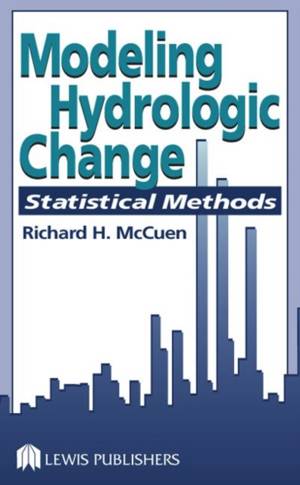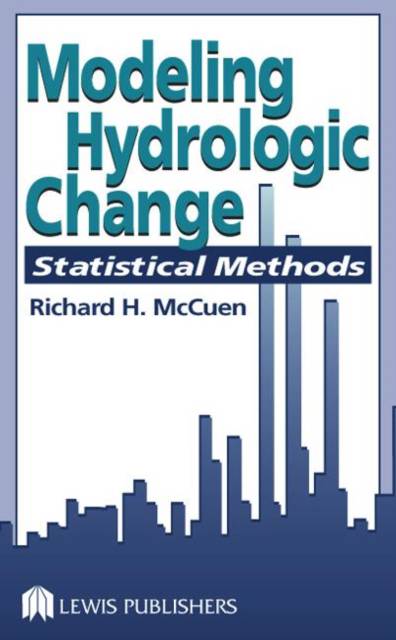
- Afhalen na 1 uur in een winkel met voorraad
- Gratis thuislevering in België vanaf € 30
- Ruim aanbod met 7 miljoen producten
- Afhalen na 1 uur in een winkel met voorraad
- Gratis thuislevering in België vanaf € 30
- Ruim aanbod met 7 miljoen producten
Zoeken
€ 351,45
+ 702 punten
Omschrijving
Modeling hydrologic changes and predicting their impact on watersheds is a dominant concern for hydrologists and other water resource professionals, civil and environmental engineers, and urban and regional planners. As such changes continue, it becomes more essential to have the most up-to-date tools with which to perform the proper analyses and modeling of the complex ecology, morphology, and physical processes that occur within watersheds. An application-oriented text, Modeling Hydrologic Change: Statistical Methods provides a step-by-step presentation of modeling procedures to help you properly analyze and model real-world data. The text addresses modeling systems where change has affected data that will be used to calibrate and test models of the system. The use of actual hydrologic data will help you learn how to handle the vagaries of real-world hydrologic-change data. All four elements of the modeling process are discussed: conceptualization, formulation, calibration, and verification. Although the book is oriented towards the statistical aspects of modeling, a strong background in statistics is not required. The statistical and modeling methods discussed here will be of value to all disciplines involved in modeling change. With approximately 100 illustrations, Modeling Hydrologic Change will equip you with an understanding with which to perform the proper analyses and modeling of the complex processes that occur across various disciplines.
Specificaties
Betrokkenen
- Auteur(s):
- Uitgeverij:
Inhoud
- Aantal bladzijden:
- 448
- Taal:
- Engels
Eigenschappen
- Productcode (EAN):
- 9781566706001
- Verschijningsdatum:
- 29/10/2002
- Uitvoering:
- Hardcover
- Formaat:
- Genaaid
- Afmetingen:
- 164 mm x 241 mm
- Gewicht:
- 780 g

Alleen bij Standaard Boekhandel
+ 702 punten op je klantenkaart van Standaard Boekhandel
Beoordelingen
We publiceren alleen reviews die voldoen aan de voorwaarden voor reviews. Bekijk onze voorwaarden voor reviews.











